Updated: 27-Aug-2018
For many years, pioneer M. Ambroise Farcot, was engaged in the design of air-cooled engines. He designed different types:
-Cylinders in V,
-Horizontal radial,
-Two horizontally-opposed cylinders,
-and the known and famous fan shape engine.
-Many of them were not built, but those we know, we can consider as very important.
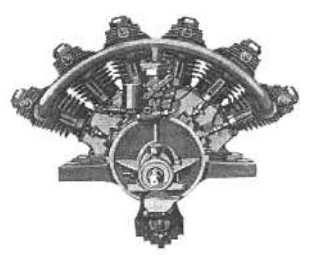
"Fan-shape Farcot engine"
-The most characteristic product was the six-cylinder fan-shape engine, in two different rows that were separated 50 mm from each other.
-In the schematic diagram below we see that the crankshaft has two crankpins, accommodating the cranks of three cylinders each.

"Farcot with fan"
-In the same diagram we can see a considerable fan for cylinder cooling on the ground.
-The valves were driven and had no rockers. They were concentric, because the intake passed through the center of the exhaust.

"Frontal view of the Farcot with fan"
-The first engine built by Farcot appears as the air-cooled V-8 in 1905, giving 100 hp.
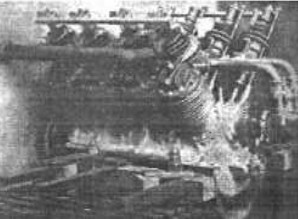

“Farcot V-8 illustrations
-In the version that has a fan for forced air-cooling, there is the similarity with the De-Dion Bouton and Renault engines of the time.

“Farcot V-8 with fan”

"With fan and without fairing"
-A two-cylinder Farcot V with the two cylinders off the crankshaft and a somewhat displaced distribution for this reason. It only gave 8-10 CV, and weighed 55 pounds.
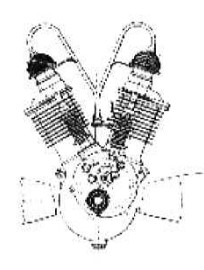
"Farcot V-2"
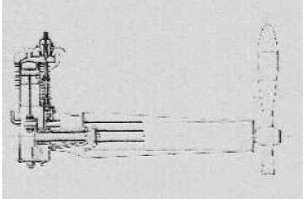
"Farcot V-2, installation diagram"
-There were Farcot engines with two horizontally-opposed cylinders. These engines were manufactured in a range from 12 to 20 CV.
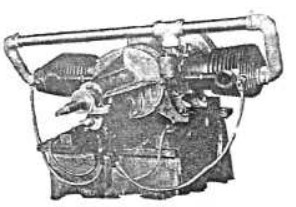
"Farcot 2-cylinder"
-In 1908 he made the double-row, eight-cylinder radial, arranged around the same crankcase.
-Not too correct for a regular run due of its ignition angle, because there are still pairs in each row.

"8-cylinder radial"
-We notice the misalignment of the cylinders with respect to the center of the crankshaft.
-According to the documents of the time, "To obtain light weight, Farcot adopted a single valve per cylinder, determining the admission or exhaust through the stroke or height of the valve".
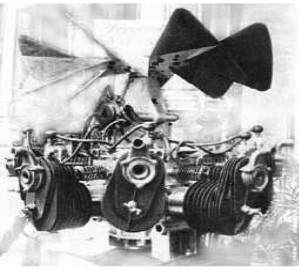
"With fan and without fairing"
-And" from the point of view of balance, the adoption of the even number of cylinders on the same horizontal plane, allowed the animated masses of reciprocating movement mutually annul their effects, suppressing the use of supplementary masses. Also the effects of gravity were neutralized in the horizontal position. "
NOTE: modernly, in radial engines such as the P & W R-2000 we see balanced cams in the magnetos to relativize the effect of gravity in each cylinder, for its different position.
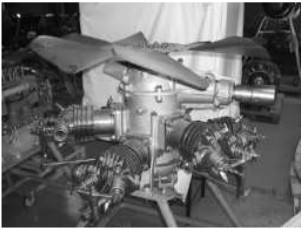
"Farcot 6-cylinder at the MAE"
-The above image shows a 6-cylinder with two rows of 3 cylinders, a horizontal radial, with fan and drive output on the right.
-We can see that the center line of the near cylinder does not match the center of the crankcase. And here they use two valves per cylinder.
-The 8-cylinder horizontal-radial engine is composed of two slightly displaced groups of 4 cylinders in X, with two cranks on the crankshaft. All in a single central crankcase.
-Each cylinder has a single valve (REP style) making the intake and exhaust take place by using a double height cam on the center plate.
-The fan is to force the air through a fairing -not installed- towards the cylinder fins.
From Appendix 9: From the two-cylinder boxer we have new illustrations taken at the Tekniska Museet in Stockholm.
-It is the horizontally-opposed two-cylinder that gave 30 CV.

"Farcot 30 CV engine"

"Half-side or half-front view"
-The most curious things about this engine are the cylinders with cooling fins that are perforated in an original but not unique way, as there is some other example.
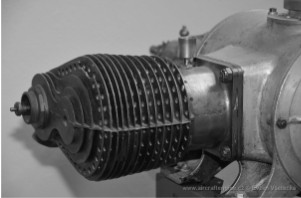
"Details of the fin holes"
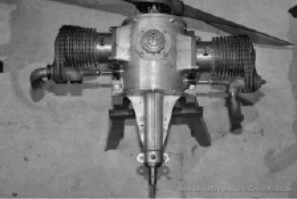
"Characteristic rear end"

"Side view"
-Below a new and better defined photograph of the Farcot 8-cylinder V-engine.

"Farcot's 8-cylinder V-engine"
-From an old book we have got a new drawing of the Farcot 8-cylinder radial.
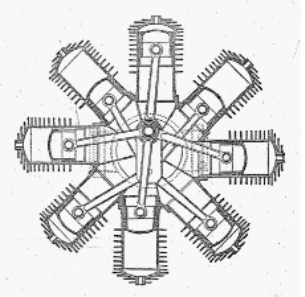
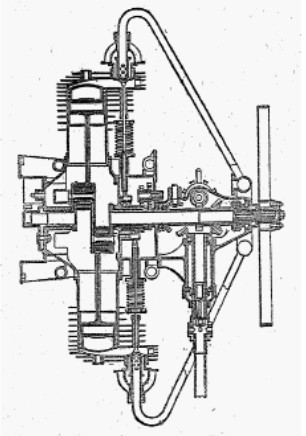
"Farcot 8-cylinder radial"
-In the main text appears a similar one but with a different position of the crankshaft and therefore of connecting-rod system and pistons as well.
-By studying both it is possible to have a better idea of the engine.
-However, the side-section view is more interesting.
-The first thing we notice, is the asymmetry of the connecting rods. The anchor of the engine to the aircraft is on the left.
-Then the interesting valve mechanism, and the output mechanism at 90°.
-Precisely for this last detail and although in the document appears in this position, it should have been presented horizontally. This is how the Farcot engines are at MAE.
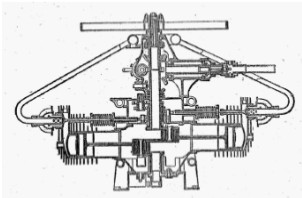
"This would be the correct position in the publication"
From Appendix 10: Below we show a cleaner picture of the same engine exposed in the main text.
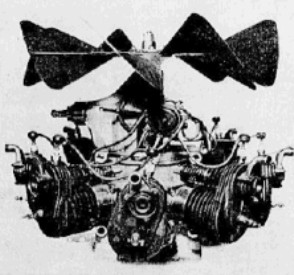
"The Farcot horizontal radial engine"
-We located a Farcot brand two-cylinder, two-stroke rotary engine in "Flugsport".
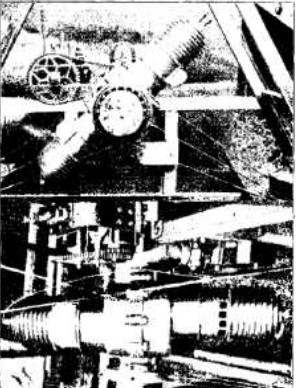
"Two photographs of the Farcot 2-cylinder rotary engine"
Engines of FARCOT
Model: 2 cyl. boxer
Arquitecture: 2-cylinder Horizontally opposed
Cooling: Air
Total Displacement:
Bore / Stroke:
Power: 20 CV
Weight: 55 Lb

"Farcot 2-cylinder boxer fig.3"
Model: 2 cyl. rotary
Arquitecture: 2-stroke2-cylinder Rotary
Cooling: Air
Total Displacement:
Bore / Stroke:
Power:
Weight:
Model: 6 cyl. radial horizontal
Arquitecture: 6-cylinder Radial
Cooling: Air
Total Displacement:
Bore / Stroke:
Power:
Weight:

"Farcot 6-cylinder radial at the MAE"
Model: 6 cylinder fan-shape
Arquitecture: 6-cylinder Fan-shape
Cooling: Air
Total Displacement:
Bore / Stroke:
Power:
Weight:

"Farcot 6-cylinder fan-shape engine"
Model: 8 cyl. radial (horizontal)
Arquitecture: 8-cylinder Radial
Cooling: Air
Total Displacement:
Bore / Stroke:
Power:
Weight:

"Farcot 8-cylinder radial"
Model: V2
Arquitecture: 2-cylinder V-Engine
Cooling:
Total Displacement:
Bore / Stroke:
Power: 10 CV
Weight: 55 Lb
Model: V8
Arquitecture: 8-cylinder V-Engine
Cooling: Air
Total Displacement:
Bore / Stroke:
Power: 100 CV
Weight:

"Farcot V-8 engine"


